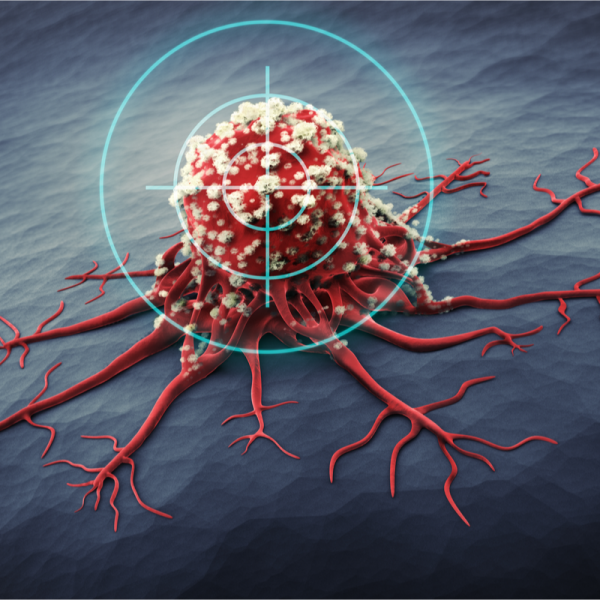
Prevention of tumour processes
Cancer tumours consist of cells that have no normal control mechanism of cell growth.
Cancer cells are thus characterised by their rapid unregulated cell growth. In general, cancer tumours can develop from any tissue and in principle form in any organ.
The tumours can be either benign or malignant.
But how can tumour processes in the human body be prevented?
To answer this question, it is probably first necessary to explain in more detail which exact processes lead to unregulated cell growth.
Which processes lead to the development of tumours?
Tumours develop through the sequence of the following processes:
- precancerous and cancerous transformation: normal cells develop into cancer cells in a complex process. The starting point for this is an infection with cancer-causing viruses (oncoviruses), such as chemical or free radicals, but also the so-called human papillomaviruses (HPV). But genetic factors can also transform the DNA of a cell. These cancer-causing viruses, or genetic transformations, damage the genetic material of the respective cell in its function. However, this is not yet cancer.
- direct or indirect carcinogenic factors: Several factors are decisive for the formation of cancer cells. Although many viruses can damage the DNA of a cell, only the retrovirus can transform the DNA of the host cell. Other cancer viruses, however, merely attach themselves to the surface of the chromosome and damage its function. It takes many of these chromosomal changes to form malignant tumours. However, the immune system of a healthy person will often destroy this cancerous cell before it replicates and becomes cancer. People with a weakened immune system, such as HIV patients, therefore have an increased risk of developing cancer.
Methods to prevent cancer before it breaks out
Cancer cells renew themselves just like other cells. Doctors see this as a way to prevent the development of cancer before it develops. To do this, the potential cancer cell must be recognised and eliminated at an early stage. Since tumour growth continuously excretes small fragments of genetic material (DNA) as well as genetic information (RNA) into the blood, scientists have now developed a method to measure these amounts of genetic material in the blood plasma. In this way, the DNA or RNA molecules could be used for the early detection of cancer. This is at least the goal of the Heidelberg method: "Capture and Amplification by Tailing and Switching (CATS)".
The newer frequency therapy, on the other hand, eliminates infectious agents such as human papillomaviruses (HPV) from the immune system.
Frequency therapy can thus eliminate the infectious agents of cancer, but not the actual tumour cell. The transformation of the tumour cell into a healthy cell remains the task of the healthy immune system.
Within frequency therapy, immunological aspects are therefore also focused on for the prevention of cancer. However, a non-specific strengthening of the immune system is not sufficient to fight cancer. Rather, the immune system must be strengthened to such an extent that it can destroy the cancer cells on its own, such as the following therapeutic approaches:
- Use of checkpoint inhibitors: helps against the so-called brake blockade of the cancer cells, within which an immune response is to be blocked. Here, the T-killer cells are activated by a specific antigen, which allows the cancer to continue growing. The so-called checkpoint inhibitors are antibodies produced in the laboratory which are specifically directed against these "brakes" in the immune system. This enables the T-cell to destroy the cancer cell. Especially in the case of black skin cancer, about one fifth of all patients benefit from this procedure.
- Tumour vaccines: At the moment, the German Cancer Research Centre (DKFZ) is researching cancer vaccines that are supposed to induce a reaction against tumour antigens. Ready-made proteins or sections of them are to be used together with substances to strengthen the immune response to the antigen. As an alternative to protein, a piece of genetic material or tumour cells that are no longer capable of growth can also be used as a vaccine.
- immuno-oncological therapies: are intended to reactivate the body's own immune system so that it is once again able to actively fight the cancer. Within immuno-oncological therapy, artificially produced antibodies can be used, for example. However, certain side effects can also occur in connection with immuno-oncological therapy, such as inflammation of the intestines, liver, endocrine glands (especially the thyroid, adrenal glands), skin, kidneys or other organs.
